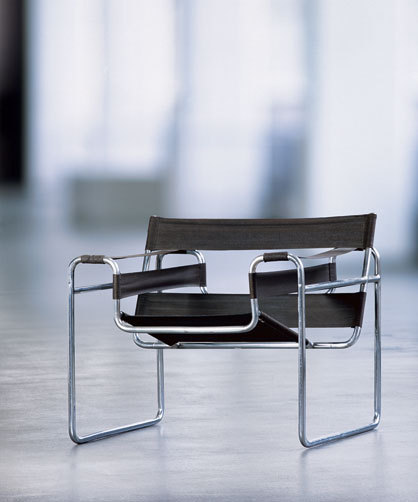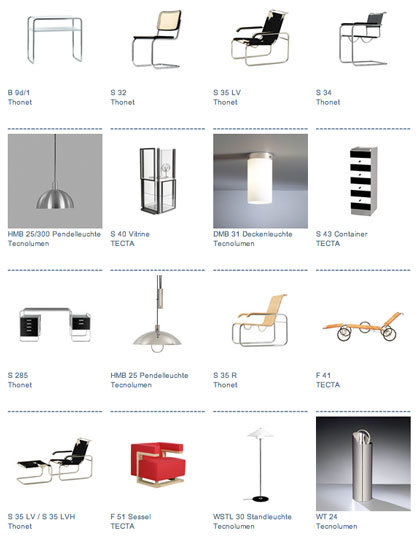90 Years Bauhaus
Text by Nils Becker
Zürich, Switzerland
25.08.09
Exactly 90 years ago Weimar saw the foundation of the institution which more than any other influenced the architecture, design and art of the twentieth century.
Exactly 90 years ago Weimar saw the foundation of the institution which more than any other influenced the architecture, design and art of the twentieth century.
Marcel Breuer, Lounge Chair B 3, second version 1926. Photo: Hartwig Klappert, Berlin, Stiftung Bauhaus Dessau

Marcel Breuer, Lounge Chair B 3, second version 1926. Photo: Hartwig Klappert, Berlin, Stiftung Bauhaus Dessau
×The Bauhaus was one of the first colleges of design, and in the 14 years of its existence it brought together not just many of the most important artists, architects, designers and graphic artists of the age but also provided a blueprint for the comprehensive design and modernisation of our industrial society. At the time neither the teachers, their students nor society as a whole were able to predict with what ease and universal validity the design principles of the Bauhaus would be adapted to a range of applications worldwide. The institution itself was forced by conservative political forces to change location a number of times, moving from Weimar via Dessau to Berlin, where the Bauhaus was closed down in 1933 under political pressure of the Nazis.
Paradoxically it was this very harassment of the Bauhaus which was responsible for the unfolding of its worldwide significance. Many of its former teachers emigrated to the United States and as university professors had a major influence on generations of architects and product designers. Walter Gropius and Marcel Breuer lectured at Harvard, Mies van der Rohe at the Illinois Institute of Technology (IIT) in Chicago, and Josef Albers at Black Mountain College, to name just a few.
It is accordingly not surprising that the term 'Bauhaus' became a style and is today representative of radical modernisation in architecture and everyday objects, with all its negative concomitants and extravagances.
Walter Gropius, 1928. Photo: Associated Press, Berlin Bauhaus-Archiv Berlin
Today the Bauhaus has become common cultural property. The pedagogical and political aim of its founders seems to have been achieved only partially though. The furnishings and lighting conceived as affordable industrial products today belong to the most expensive and eligible luxury objects. This explains the paradox that many of their designs are today being copied or modified in the cheapest fashion. Nowadays the official manufacturers of the original designs have to invest a large part of their revenues in legal battles to defend their rights, but the aim of eliminating all the cheap copies on the market seems to be a difficult if not hopeless exercise. However, at stake here for the manufacturers is not just loss of income but also the protection of their customers and preserving the legacy of the designers themselves.
As a result the anniversary celebrations at the Martin Gropius Bau in Berlin and New York's Museum of Modern Art are accomplishing more than just a service in terms of history and art history. They put the real designs of the Bauhaus in the spotlight once more and highlight the genuine quality of the original works, which are threatened by the sheer mass of similar or modified copies.
On the occasion of the Bauhaus anniversary Architonic is presenting a comprehensive selection of approved Bauhaus designs which are still or once more in production today.
Bauhaus. A Conceptual Model. The Exhibition
Martin-Gropius-Bau, Berlin
22 July - 4 October 2009
Bauhaus 1919–1933: Workshops for Modernity
Museum of Modern Art, New York
November 8, 2009–January 25, 2010




